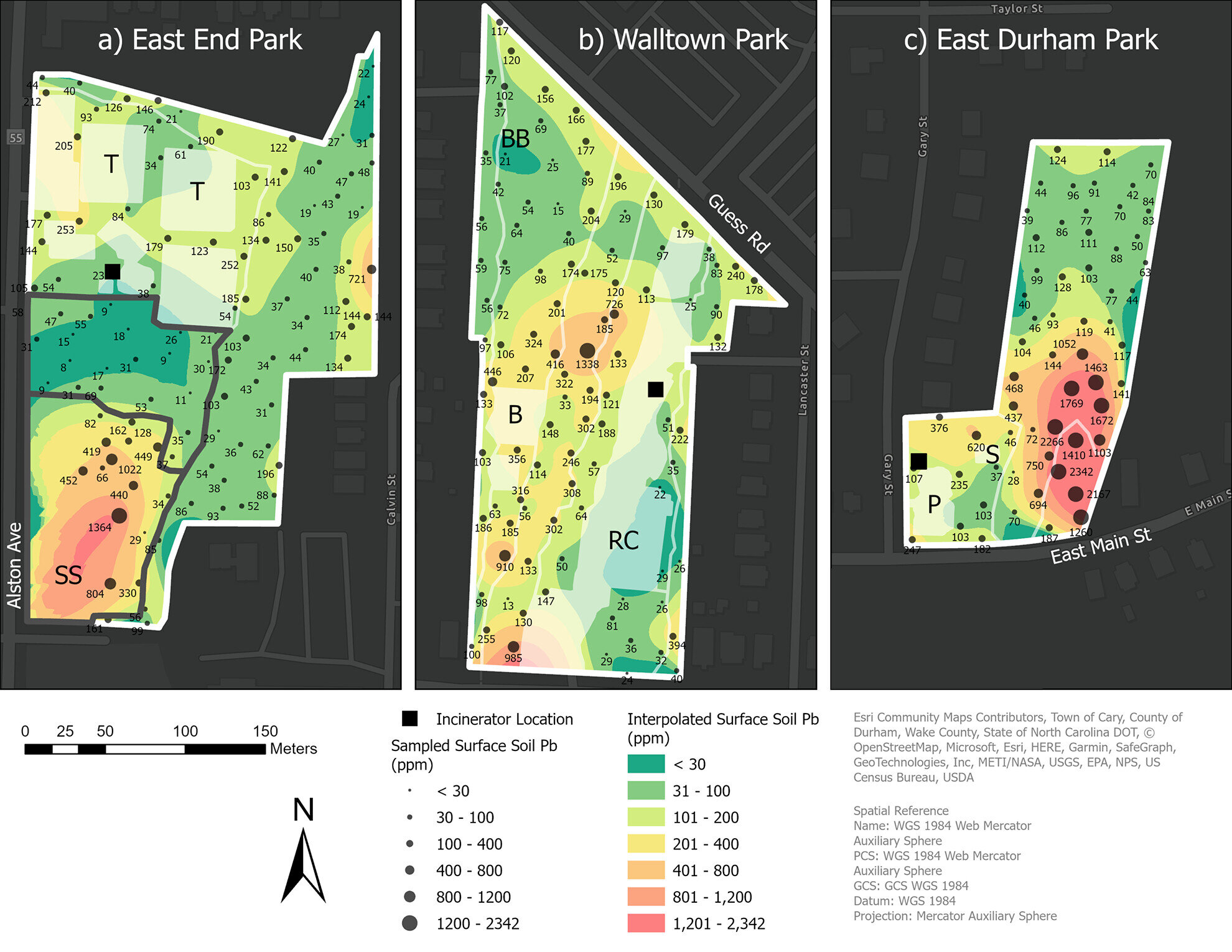For much of the last century, many cities across the United States and Canada burned their trash and waste in municipal incinerators. Most of these facilities were closed by the early 1970s due to concerns about the pollution they added to the air, but a new Duke University study finds that their legacy of contamination could live on in urban soils.
“We found that city parks and playgrounds built on the site of a former waste incinerator can still have greatly elevated levels of lead in their surface soils many decades after the incinerator was closed,” said Daniel D. Richter, professor of soils at Duke’s Nicholas School of the Environment, who co-led the research.
Exposure to lead in soil has been linked to potential long-term health problems, particularly in children. These include possible damage to the brain and nervous system, slowed growth and development, and learning and behavioral problems.
To conduct their study, Richter and his students collected and analyzed surface soil samples from three city parks in Durham, N.C. that are located on former incinerator sites closed in the early 1940s.
Samples collected from a two-acre section of East Durham Park contained lead levels over 2000 parts per million, more than five times higher than the current U.S. Environmental Protection Agency (EPA) standard for safe soils in children’s play areas.
2023-09-12 04:00:03
Post from phys.org
